Sales And Marketing In A Wild, Wild Web3 World

Ester Shlain
Author
I’m Ester Shlain, a Business Analyst and UX designer since 2014, and I have worked with Web3 projects for over three years. My first project was in 2019, and it was a DAO. So far, I’ve learned hundreds of practices – running NFT collections, community activation, DAO enablement, and business adoption from Web2 to Web3. On top of that, I’ve worked with both the standard and custom Web3 tools and frameworks.
We’ve all been lucky enough to witness the transition from Web2 to Web3 and the paradigm shift in online interaction. Founders, brand managers, marketers, and everyone who creates product value now have new tools to interact with the audience.
How do Web2 sales work? The mechanics of “Come, see, buy action” is straightforward and familiar. Veni, Vidi, Emi.
If you didn’t come or didn’t see – marketing experts know how to find you, create a need, and lead you to action.
If you didn’t buy – the same marketers can bring you back and incline you to action.
Web3 is a new concept in internet usage. The mechanics from the internet’s past only partially fit.
How will marketing methods change with the change to Web3? What impact will it have on the internet advertising industry? To avoid the wave of the times, I want to summarize from the perspective of a person engaged in the internet advertising industry.
Web2 marketing approaches that are relevant for Web3
Let’s imagine you are a marketing agency (I recommend everyone to be their marketing agency and client simultaneously). I highlighted the new features to expand your services according to the following flow:
Legal
Whitepaper, Manifest
Token Structure & Tokenomics
Landing Page, Minting page, Lead-capture forms, etc.
2. Strategize
Research & Planning
PR [what]
Influencer Identification
Offers & Bounty
PR [how]
PR [deep]
There are more and more opportunities to hear it not only in the internet-related industry but also in daily life and social media.
What else does Web3 have that Web2 doesn’t? NFT. Wallet. Wallet Marketing. Airdrops. DAO (with their treasury and voting). And, of course, the community. This is the primary driver of Web3 projects today.
Web3 Marketing adds storytelling and community to the mix 🪄
Web2 performance marketing tools and approaches are stable and tamped down by years of practice. SEO, SMM, e-mail marketing, and media advertising are also working. Account-based marketing or Big Data tools help to create a personalized advertising experience for a particular person. Campaign performance is measured and tracked through referrals, coupon codes, and phone numbers. You can impact the performance and track CPA, ROI, and CAC in a real-time. This approach’s main principles and goals are ROI and sales increase.
Thus, Web2 marketing is focused on paid advertising and branding performance, whereas brand strategy, brand awareness, and PR are optional additions to marketing and sales performance. In most cases, all these areas go in parallel, which is ineffective because the ideological part sags quite strongly, and companies sooner or later face low LTV (lifetime value), lack of knowledge about the product, and loyalty to it.
Web3 marketing is differentiated from Web2 by decentralized technologies such as blockchain, AI, and IoT. Blockchain allows you to tokenize and share assets, put data on-chain, create digital identities, immersive experiences, etc. Metaverse based on AI and IoT enables brands to get closer to their potential customers not by selling something directly but by adapting to people’s lifestyles and becoming an integral part of them.
What’s wrong with Web2 marketing?
Although Web3 sounds like a dubious buzzword, it is expected to improve problems in the Web2 era and promote distributed ownership of its content.
The problem with Web2 lies in centralized ownership of data.
Web2 proposes valuable services and social media as well. But core players are tech giants such as FAANG (Facebook, Amazon, Apple, Netflix, Google) or GAFAM (Google, Amazon, Facebook, Apple, and Microsoft) know a lot about users, which is alarming, and aggressively monopolizes data and regulations:
1 Companies, but not the user decides how to pay for and use user-generated content. They collectively store web content and users’ personal data and use methods such as sales of targeted advertising space.
2 An outside company Cambridge Analytica harvested over 50 million Facebook users’ data, arranged one of the most significant data leaks in the social network’s history, and used this data to manipulate public opinion.
3 Restrictions on crypto-related advertising and limiting advertiser innovation.
4 The situation of monetizing using personal data is also a problem.
5 Invalid or low-quality clicks and ad fraud are rising – ad prices are going up, and ROI is decreasing.
6 Targeting options are not precise enough, especially for high-spending consumers. Advertisers generally target blindly and often can’t verify by themselves the quality of clicks or what kind of people came to them.
7 Apple caught the anti-tracking trend and reduced the amount of user data transferred. Adding an option to refuse data transfer to applications in new versions of iOS caused trouble for Meta (which includes Facebook). Advertising became less accurate and measurable. Also, Facebook can’t work effectively with advertising in Europe, where GDPR is quite strict, and loses billions of dollars.
8 Leaving the product or service even if you are dissatisfied with the terms of use is unrealistic because it means letting go of what the user has built up, such as friendships on the internet. The resulting lock-in of users and data by large corporations prevents new companies with good ideas from entering.
User controls data provision
Here is a good showcase. Brave is a Web3 internet browser that replaces Chrome and Safari, allowing users to freely control the display of ads and get compensation when viewing ads. When the user views the advertisement, he provides data used for targeting, and the consideration paid is the revenue for this data provision. It will align with the Web3 concept of users voluntarily providing data and receiving compensation from the status of unilateral ownership and use of personal data on the platform side so far.
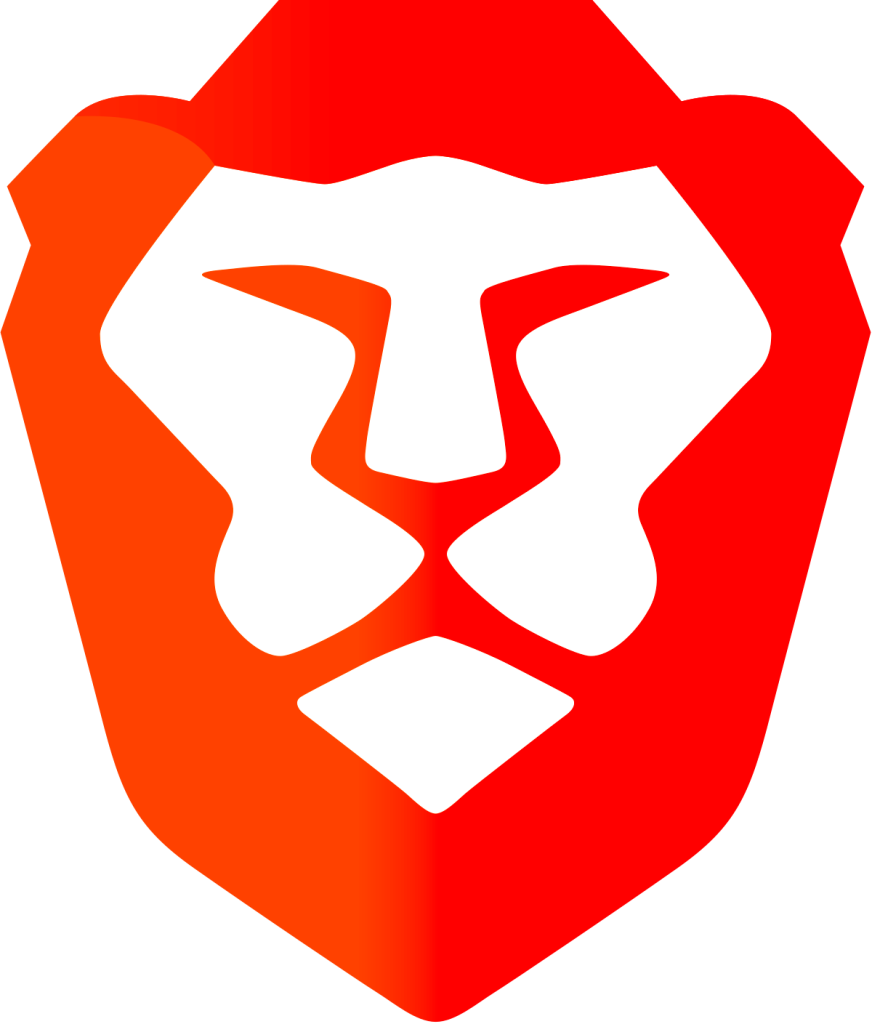
Wide applicability
The digital art field is a hot topic, as it uses the concept of costs and profits that creators can earn from digital data. Digital art creators receive compensation for the transfer of ownership of their works. By adding value to the digital data of individual works and making it possible for individuals to own them, it has become possible to trade them in the same way as tangible works of art, making it possible for artists to earn a profit.
NFT holds the key to Web3. Why?
NFT made the mechanism of monetization possible with the digital data explained above.
Digital data, whose issuance and transaction histories are recorded using blockchain technology, has a low risk of being copied or tampered with and can now be treated as assets. NFT is a digital token with a unique value issued in this way. Since it is unique data that nobody can replace, it can now be owned and traded as a highly scarce asset.
Difference between Customer Profiles

Todd M. Howard, 312-633-8108, male, was born on Feb 6, 1991, interested in 2014 Lexus LS

Jane D, janedveney@rhyta.com, 23 y.o., female, Poplar Lane, Miami, FL, married

Bryant, bryantlblatt@dayrep.com, 2 kids, university (postgraduate)

0x37F56d94bEA35E9AA2bE3ABfaD6E3658a 845906d Holds 20 $BTRST

0xED46268f04D92E781e01154A271A5ad09 089F443 H.E.R. DAO member

0x4285988f48D651ea649df93eA83fFfcE583 07f34 Owns 3 BAYC NFTs
Web1, Web2, Web3 Comparison
Static. Free enough. Internet from scratch. Main CTA is ‘Register.’
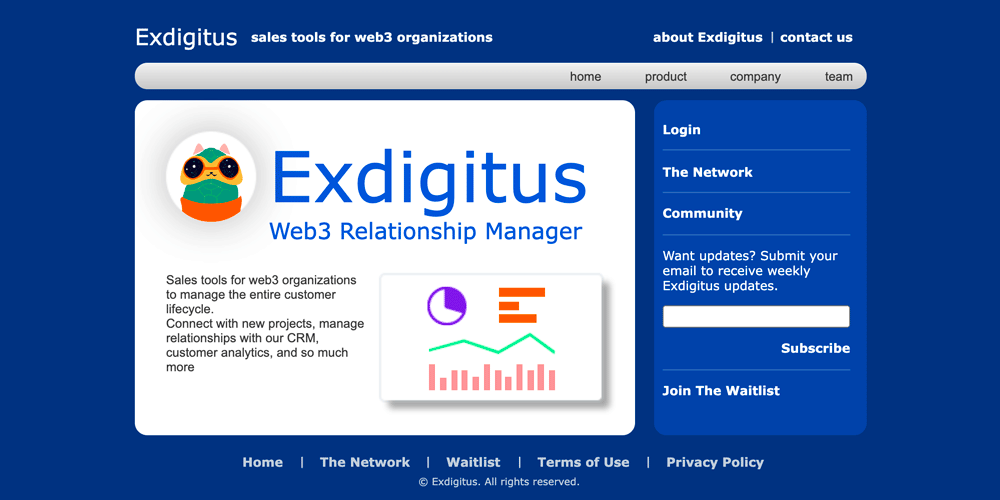
Read-write. Social media to come. Users generate content but don’t own it. Main CTA is ‘Sign up‘ via social account.
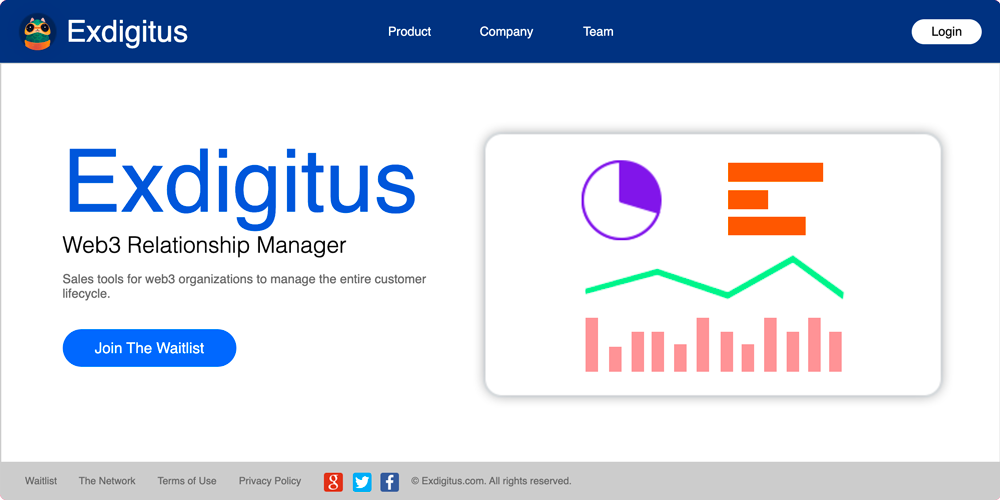
Trust, own, and verify. Decentralized. Main CTA is ‘Connect Wallet.‘
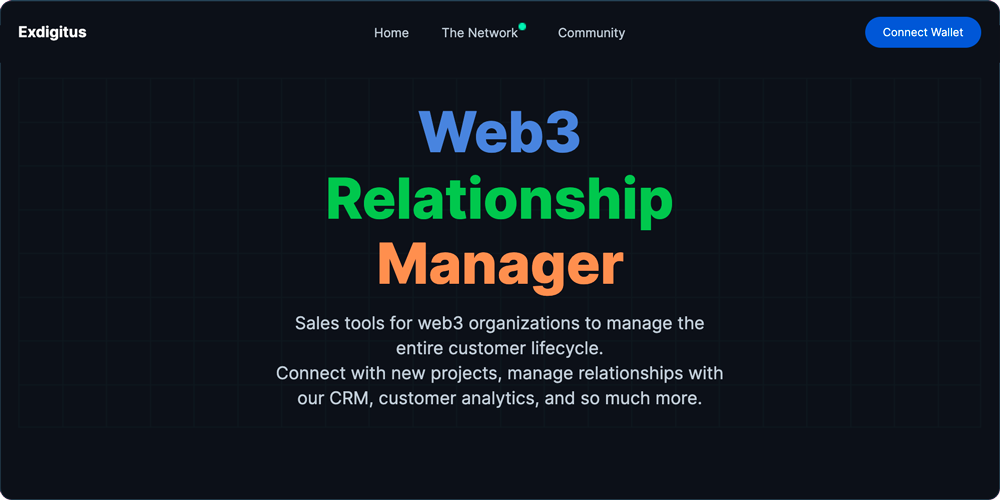
If you use token graphs to target ads, what is beneficial for advertisers is the certainty of the data provided.
In addition to NFT’s “irreplaceable and unique” and “hard to copy and tamper with” properties, it also fact that the user owns NFT data, so it can be targeted and analyzed with certainty when marketing.
On the other hand, privacy protection will be secured on the user side.
Because it is the “owner of the target NFT” that is targeted, not the individual itself.
For example, suppose you have an ad targeting Mr. A, who owns Invisible Friends NFT. The ad will be displayed on target A, but if the NFT art you own is transferred from Mr. A to Mr. B, A will be removed from the target, and the ad will be delivered to B.
By targeting an owner of NFT rather than the individual described above, it will also be targeted with consideration for privacy protection.
Affects targeting in the advertising industry
As mentioned above, using personal data for targeting won’t be easy. Target selection and analysis will be performed using a token graph of what kind of NFT you own.
As a result, targeting based on age, gender, and other factors to predict future life events is likely to become more complex.
Since the analysis is based on NFTs you already own, the same can be said for users trying to make purchases unrelated to NFTs they own.
Thus, the rise of data in Web3 and the problems of ad campaigns and privacy in Web2 has led to an emerging trend in 2023 – the wave of wallet marketing.
Web3 Marketing Trends 2023
TREND 01
Wallet Targeting
In 2022 MetaMask, the leading Web3 wallet broke 30M monthly active users accessing Web3 applications, a 42% increase in 4 months. Accordingly, there is more and more on-chain data about wallets and holders’ actions, such as transactions, tokens, NFTs, crypto domains, educational credentials, gaming achievements, social activity records, etc. This data can be used to find users and customers and to build high-quality target lists for each business. And especially there could be further growth of this data related to attendance at events via POAP – for example, educational information, course completion, as well as participation in fan communities, sports, or gaming. In DeFi, the main markers can be transaction flows – payments, DAO voting on-chain, and so on. The growth of data gives new ground for targeting and targeting is more transparent due to the transparency of the blockchain itself – because users de facto agree that their actions are public.
Some services allow you to export wallet lists by parameters and with a high degree of probability to bind parsed data, such as Twitter handle, social links, email, name, and so on. Thus, you can convert wallet audiences into more actionable and reachable lists. With clustered wallets, advertisers use them for outreach or as targeting parameters for traditional Web2 ad platforms, suggesting influencers and collections for collaborations and affiliate programs.
Public on-chain data is reliable and allows high-resolution targeting and building direct relationships with users bypassing big tech monopolies.
NFT OWNERS TARGETING
WHALE TARGETING
“I want to identify who bought or flushed the most tokens of the Blockparty project.”
“Who has the most pieces from the Famous Fox Federation NFT collection?”
ACTION TARGETING
“Collect wallets of people who will buy ApeCoin.”
“Collect wallets claimed Lens Protocol handle.”
CONTRIBUTORS TARGETING
“Who were the early birds in Metafi?”
“Who contributed the most to Guild?”
TREND 02
Prospecting
Prospecting is the search for leads by implication – for example, startups that have raised a round, projects that are actively promoting, and so on.
Form a pool of potential leads depending on how narrow your product niche is. Usually, it’s about 300-500 contacts, sorted and enriched with information. If you have investors, ask them to introduce you to potential leads.
Then create sales materials to help convince clients that the project can be dealt with and how your company can help them. This can be an article, documentation, or a personalized playbook.
When the prospecting list is ready, and you have sales materials, proceed to active sales, ideally, through warm contacts.
Be prepared to make a discovery call and have a formed follow-up. After a successful initial call, in addition to the feedback, request a proposal request from the lead.
Then, depending on your product, generate a report or material, a proposal, and the first free iteration. Let the lead test the waters, increasing the likelihood of conversion to the customer. In Web3, this works if there’s an actual demand that you’re covering.
TREND 03
Collabs
Business devs of Web2 and Web3 projects love partnerships because it is an excellent opportunity to increase the audience at the expense of another company and show your product from a new angle. However, collaboration in Web3 is built not only on ideological but also on technological compatibility, and this, in turn, can be the beginning of building an ecosystem.
Before inviting other projects to become your partners and share your audience, make sure that you have your work cut out:
- The technical side of the product. It should work smoothly – this is a must-have.
- There were no reputational losses, or they were solved by competent communication.
- Your brand is consistent in mission and vision, visually appealing, and the design doesn’t contradict the company’s essence.
- You have the resources to maintain communication with partners and audiences at the right level for a long time.
- You know how to scale the project and develop the community.
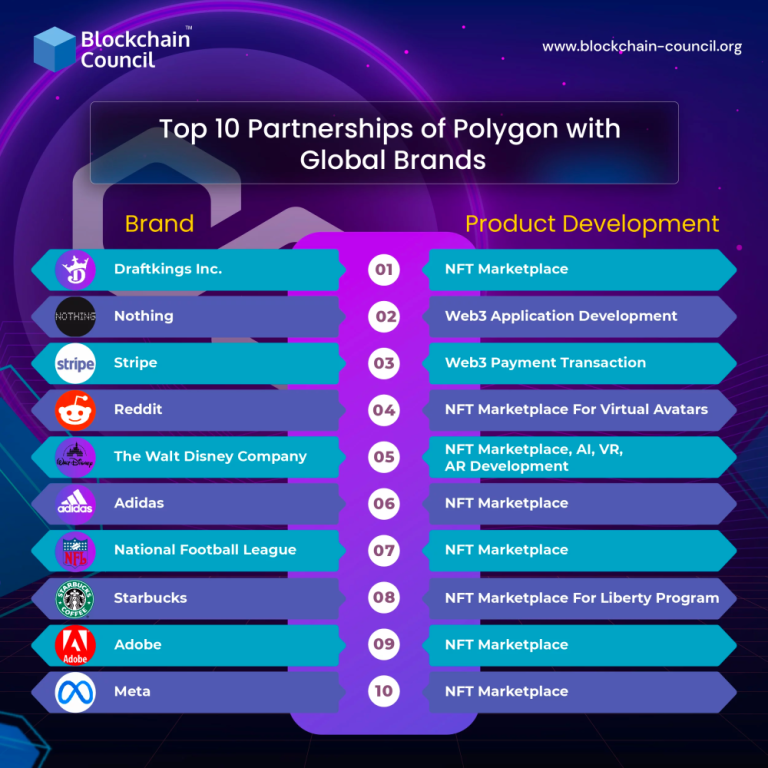
For example, Polygon Technologies constantly proves its readiness for large-scale partnerships in terms of technology and brand. Almost every week Ryan Wyatt, the CEO of Polygon Studios, posts on Linkedin about new partnerships with world-famous brands. In September, Polygon entered into a partnership with Starbucks, then collaborated with J.P. Morgan and The Walt Disney Company and announced the ability to create their own NFTs on Facebook and Instagram. And in November, the announcement of cooperation with Nike, where Polygon will launch an NFT platform for selling virtual clothes.
TREND 04
Inbound and Outbound Strategies
TREND 05
Developer Relations Marketing
TREND 06
BONUS
Forming a unique selling proposition with Web3
Marketing is not just about the promo. It’s also about finding your place in the market. Web2 companies are looking for ways to adapt and find their niche in Web3. We have prepared a short playbook on what unique opportunities only Web3 gives.
Some of these propositions will prove crucial for Web3’s mass adoption. Some are important only for a few special situations. Some are only theoretical and aren’t available in practice. Some are available now, and others will only reach total value when the Web3 ecosystem comes mainstream scale.
Key advantages that can grow Web3 adoptions now via a small number of high-demand use cases.
Web3 USP for:
Create digital scarcity by proposing unique objects as NFTs and limited supply resources as tokens.
Reward social media sharing and customer referrals with tokens, NFTs, and project roles.
Creating experiences and offers for people with specific on-chain histories and token/NFT holdings. Private events, privately sold products, cheaper loans, and pre-sale access to new projects.
Full ownership of a digital object when others can’t copy it. No risk of loss due to moderator bans, platform shutdowns, or government pressure.
Ability to see all transactions on the blockchain:
- You can build apps with transaction data from other apps
- Other apps can build with transaction data from your app
